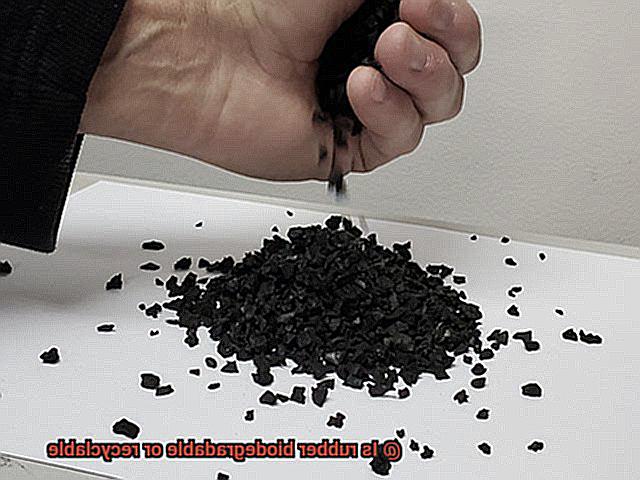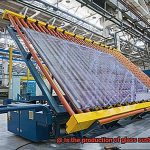Have you ever wondered what happens to the rubber products we use daily, like gloves, tires, and rubber bands, once we’re done with them? Do they decompose naturally, or do they contribute to the ever-growing piles of non-biodegradable waste in landfills and oceans? The question “Is rubber biodegradable or recyclable?” is not as simple as it seems.
Rubber is an incredibly versatile and durable material that finds its way into countless aspects of our daily lives. However, its resistance to decomposition and negative environmental impact have raised serious concerns. In this blog post, we’ll delve into the captivating world of rubber and explore its biodegradability and recyclability properties. We’ll take a closer look at the various types of rubber available, their chemical compositions, and how these factors affect their ability to biodegrade. Additionally, we’ll examine the recycling process for rubber products and explore both its benefits and limitations.
Whether you’re an eco-warrior or just someone looking to learn something new today, this blog post is for you. You’ll be amazed by what we uncover about the sustainability of rubber products and their impact on our planet.
What is Rubber?
Contents
Rubber is a remarkable material that possesses elastic properties, making it an essential part of many products across various industries. Naturally occurring in rubber trees found in South America, the sap is collected by making a cut in the bark and collecting it in cups before being transported to processing plants where it is processed into rubber.
One of the most unique features of rubber is its elasticity. It can be stretched and deformed but will snap back to its original shape once the force is removed. This property makes rubber an ideal material for manufacturing tires, shoes, gloves, gaskets, and many more products.
Another vital property of rubber is its resistance to water, heat, and chemicals. This makes it suitable for use in various environments where other materials would fail and get damaged or destroyed.
While natural rubber is biodegradable and can be broken down by microorganisms in the environment, synthetic rubber made from petroleum-based chemicals is not biodegradable. This means that synthetic rubber can remain in the environment for hundreds of years. However, we can recycle rubber products to reduce waste and conserve natural resources.
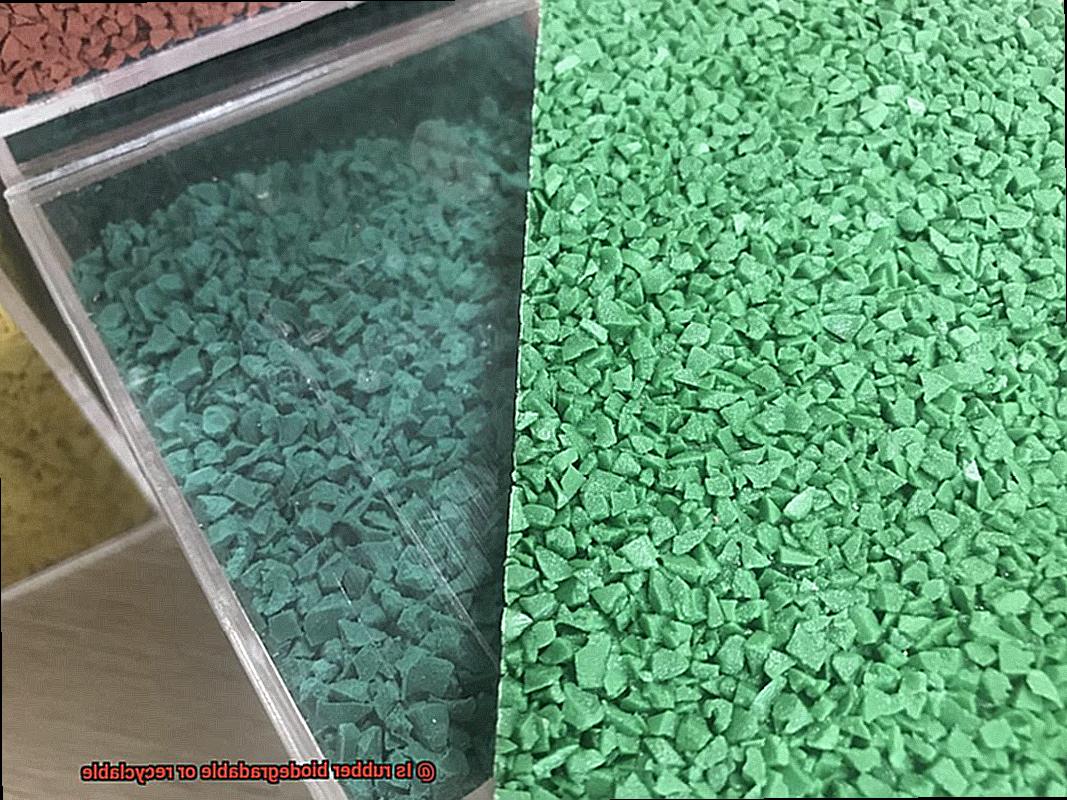
The recycling process involves shredding old rubber products into tiny pieces and using them as raw material to produce new products. Recycled rubber can be used to create playground surfaces, sports fields, and even roadways.
Is Rubber Biodegradable?
Rubber is a versatile material that has been used for centuries in various industries due to its flexibility and durability. However, the question of whether rubber is biodegradable is a significant concern, particularly with the rise of synthetic rubber production.
To answer this question, we must first understand what makes rubber biodegradable. Natural rubber, which is derived from the sap of rubber trees, is biodegradable. This means that it breaks down naturally over time when disposed of in landfills or the environment.
However, synthetic rubber, made from petroleum-based products, does not share this characteristic. The reason for this is its chemical composition. Synthetic rubber is composed of long polymer chains that are resistant to breakdown by microorganisms. This means that when disposed of improperly, it can take hundreds of years to decompose.
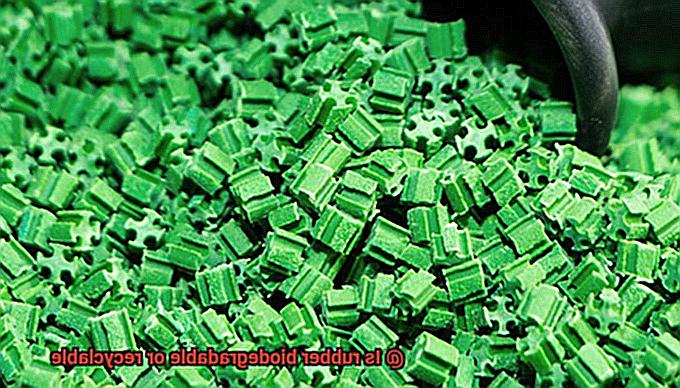
Moreover, synthetic rubber products release harmful chemicals into the environment when they eventually break down. Burning rubber releases toxic gases such as sulfur dioxide, nitrogen oxides, carbon monoxide, and particulate matter into the air, which can have serious health effects on humans and animals alike.
Is Rubber Recyclable?
If you’re wondering whether rubber is recyclable or not, the answer is a resounding yes. Rubber recycling is a fantastic way to reduce waste in landfills and preserve our planet’s natural resources. However, the process of recycling rubber can be quite complex.
To recycle rubber, old or discarded rubber products are converted into raw materials that can be used to create new products. There are several methods for recycling rubber, including mechanical grinding, devulcanization, and pyrolysis. Mechanical grinding involves shredding rubber products into small particles, which can then be melted down and used to create new products. Devulcanization is a process in which sulfuric acid is used to break down the bonds between the sulfur atoms in rubber, allowing it to be reprocessed. Pyrolysis involves heating rubber to high temperatures in the absence of oxygen, which breaks it down into its constituent components.
Recycling rubber has become increasingly popular in recent years, as people have become more aware of the environmental impact of waste and the need to conserve natural resources. Many companies now offer rubber recycling services, and some even use recycled rubber in their products. However, it’s important to note that not all types of rubber are recyclable, and some may require special handling or processing.
The benefits of rubber recycling are huge. By recycling rubber, we reduce waste in landfills and conserve natural resources. Moreover, recycling rubber also reduces our carbon footprint by reducing the amount of energy required to create new products from raw materials.
Benefits of Recycling Rubber
Not only does it help reduce waste and promote sustainability, but it also has a positive impact on the environment, economy, and society as a whole.
One of the primary advantages of recycling rubber is its ability to divert waste from landfills. Did you know that it can take up to 50 years for rubber to decompose in landfills? By recycling rubber, we can preserve valuable landfill space and reduce greenhouse gas emissions. This not only benefits the environment but also promotes a more sustainable waste management system.
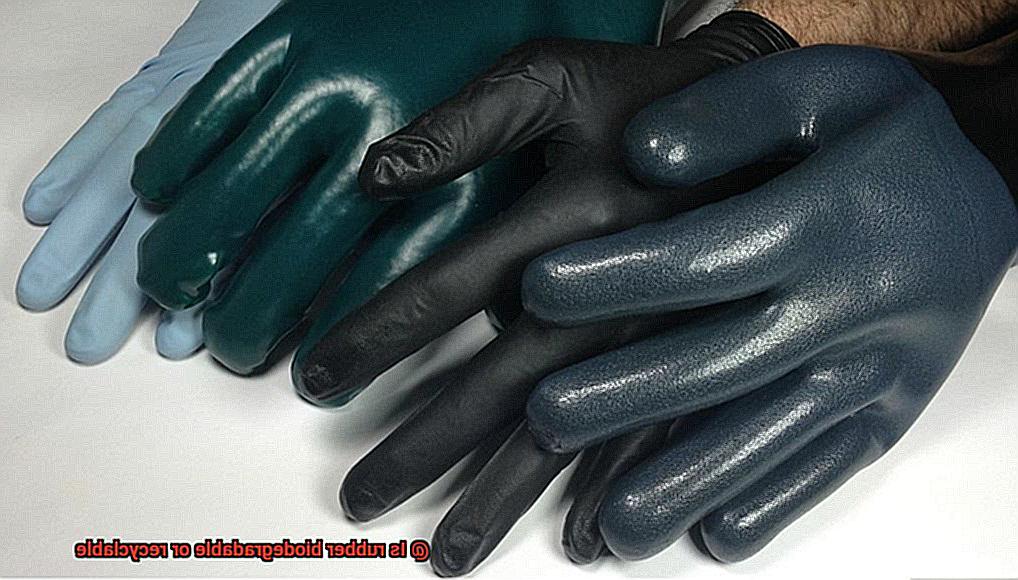
Moreover, recycling rubber helps conserve natural resources by reducing the need for virgin rubber. Virgin rubber is made from non-renewable resources like petroleum, which contributes to our dependence on fossil fuels. By recycling rubber, we can promote a more sustainable manufacturing process that reduces our reliance on finite resources. This not only benefits the environment but also promotes economic stability.
Another benefit of recycling rubber is its ability to create new products. From playground surfaces to athletic tracks and even asphalt pavement, recycled rubber can be transformed into durable and long-lasting products that provide a cost-effective alternative to traditional materials. This not only reduces waste but also promotes innovation and creativity.
In addition to its environmental benefits, recycling rubber also has a significant impact on job creation. In the United States alone, over 50,000 jobs are created through the recycling and reuse of scrap tires. This not only benefits the local economy but also creates opportunities for individuals to work in the recycling industry.
Challenges of Recycling Rubber
Rubber is a superhero material that can be found in a variety of products including car tires, shoe soles, and even playground surfaces. However, once these items reach the end of their lifespan, they pose a significant challenge for recycling. In this post, we’ll take a closer look at the challenges of recycling rubber and what is being done to address them.
One of the biggest challenges of recycling rubber is its durability. While this makes it great for its intended use, it also means that it can take centuries to decompose in landfills. This is particularly problematic for tires, which are one of the largest sources of rubber waste. To make matters worse, rubber cannot be melted down and reformed like other materials such as plastic or metal. Instead, it must be broken down into small pieces and then reassembled into new products. This process requires specialized equipment and facilities which can be costly to operate.
In addition to these technical challenges, there are also economic and logistical barriers to recycling rubber. For example, there may not be enough demand for recycled rubber products to justify the expense of collecting, processing, and transporting the waste. Additionally, the cost of transporting rubber waste to a recycling facility can be prohibitively high in some areas.
Despite these challenges, there are efforts underway to improve the recycling of rubber. Some companies are experimenting with new technologies that can break down rubber more efficiently and cost-effectively. For instance, one company has developed a way to convert discarded tires into fuel oil through pyrolysis. Others are exploring ways to increase demand for recycled rubber products by promoting their environmental benefits and durability.
Recycling rubber is an important step towards reducing waste and preserving natural resources. By continuing to invest in research and development, we can find new ways to make the recycling process more efficient and accessible for businesses and consumers alike.
3roITeXVWuE” >
Conclusion
In summary, the question of whether rubber is biodegradable or recyclable is a complex one. While natural rubber derived from rubber trees can decompose over time, synthetic rubber made from petroleum-based chemicals cannot. This means that synthetic rubber can linger in the environment for hundreds of years and release harmful toxins into the air and water.
However, there’s no need to despair. Rubber products can be recycled to reduce waste and conserve resources. The recycling process involves breaking down old rubber items into tiny pieces and using them as raw materials for new products such as sports fields, playground surfaces, and roadways.
Recycling rubber offers numerous benefits, including reducing waste in landfills, promoting sustainability, creating jobs opportunities, and curbing greenhouse gas emissions. However, there are also obstacles associated with recycling rubber due to its durability and the cost of collecting and transporting waste to recycling facilities.
Despite these challenges, researchers are working tirelessly to improve the recycling process by developing new technologies that can break down rubber more efficiently and cost-effectively. By investing in these efforts, we can find innovative ways to make the recycling process more accessible for businesses and consumers alike while minimizing our impact on the environment.
In short, while synthetic rubber may not be biodegradable, it is certainly recyclable – which means we can all play a part in protecting our planet by choosing to recycle our used rubber items instead of throwing them away.
